Sylvan and picturesque, Poonamalie Lock could be featured on a postcard, with its stone walls and historic Lockmaster’s House tucked into a thick grove of cool cedars.
From the top deck of the Horizon 3, I spot hiking trails, and the wooden tables set up nearby look perfect for picnics. But as the good-natured, green-shirted lock workers crank open Poonamalie’s jaws, my heart quickens—and I’m not even at the controls of our big boat.
The mouth of the lock looks very narrow, to my untrained eye, here on the first afternoon of our voyage. But soon enough we coast through easily, pulling to a stop on the starboard side, comfortably behind the Horizon 2, a smaller but similar craft piloted by a group of friendly Germans.
Safe, and eager to explore the waterway ahead, we wait just a few minutes for the forces of nature to take us up to Lower Rideau Lake—and the world of small towns, big forests, and blue lakes beyond.
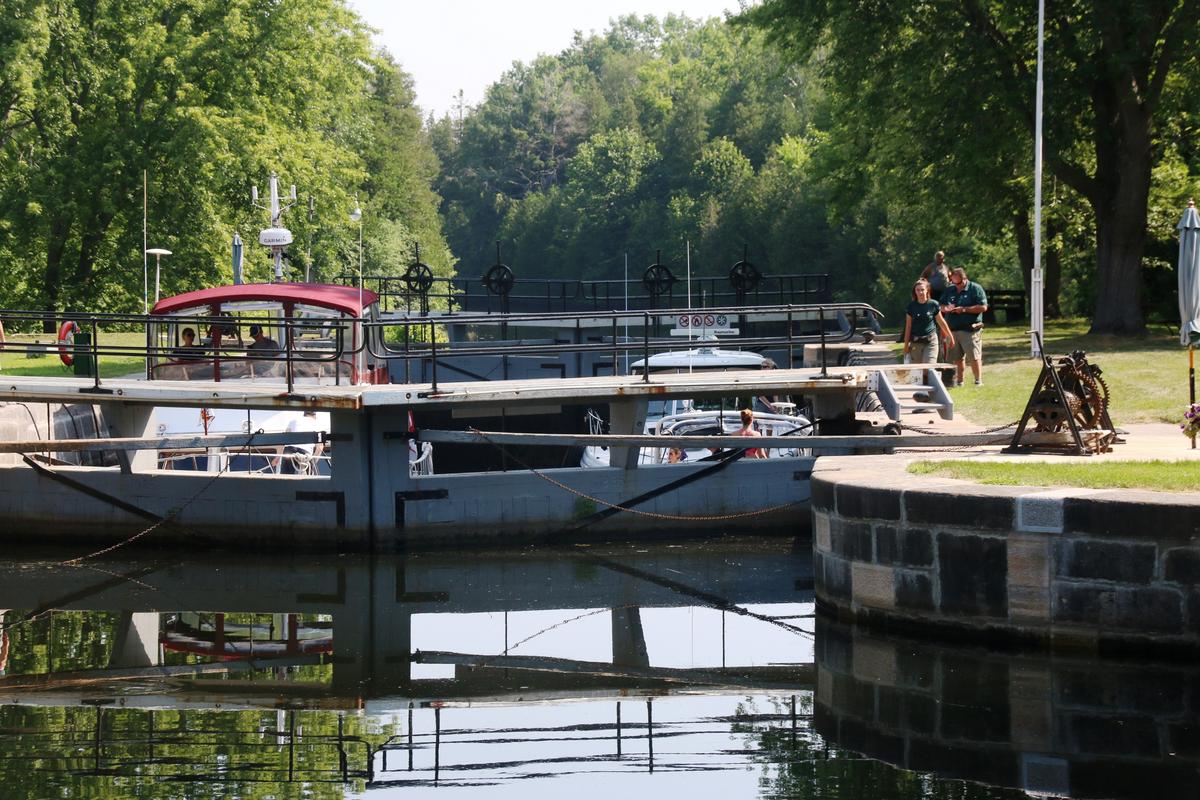
Houseboats: A Self-Contained Vacation
I’m riding on a Le Boat, navigating Canada’s historic Rideau Canal, the oldest continuously operated canal system in the world.Long a mainstay on the waterways of Europe, these stylish, upscale houseboats have recently made the leap across the Atlantic, rapidly expanding their fleet on the Rideau, which runs about 125 miles from Ottawa, the country’s capital, to Lake Ontario and the St. Lawrence River, linking together two rivers and a chain of lakes. It’s a perfect self-contained vacation, allowing boaters to remain in their social bubbles, while cruising one of North America’s most historic waterways.
Joined by a group of three friends and boarding in the small town of Smiths Falls, we get our first look at the 44-foot Horizon 3, poking our heads into its three cabins (all with private en suite bathrooms), the roomy saloon (with fully equipped kitchen), and sun deck, where we would spend the majority of our time, playing cards and steering from the topside wheelhouse and feeling the breeze.
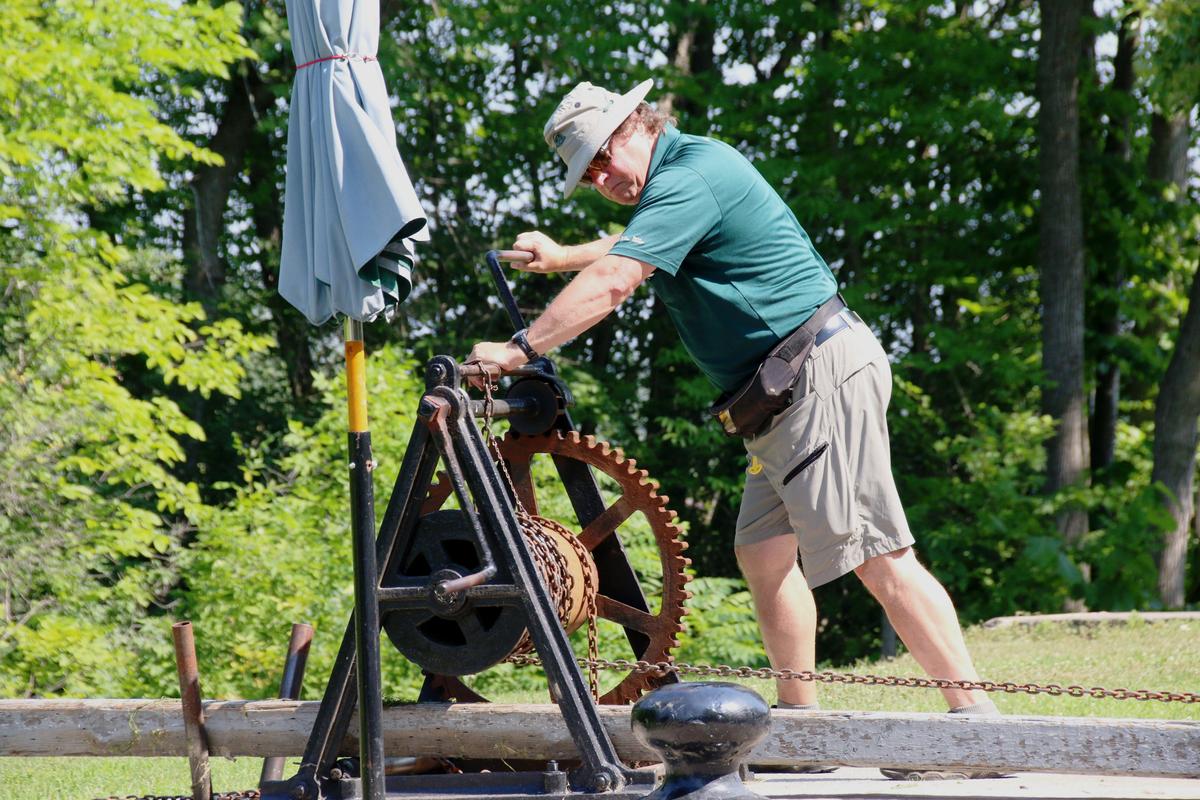
We get a whirlwind briefing from base manager Sandy Crothers on the technical side of things, too—the ventilation system the uses the temperature of the lake to cool the interior of the boat, the bow thrusters and stern thrusters, the 119 gallons of diesel fuel, and a dizzying array of buttons and switches that control everything from the hot water to the toe lights. Plus, panels of gauges—fuel, water, oil pressure, engine temperature.
I’m a little nervous about all this, but Crothers says there’s no special license or training required.
“You’re learning, from the day you arrive, until the day you leave.”
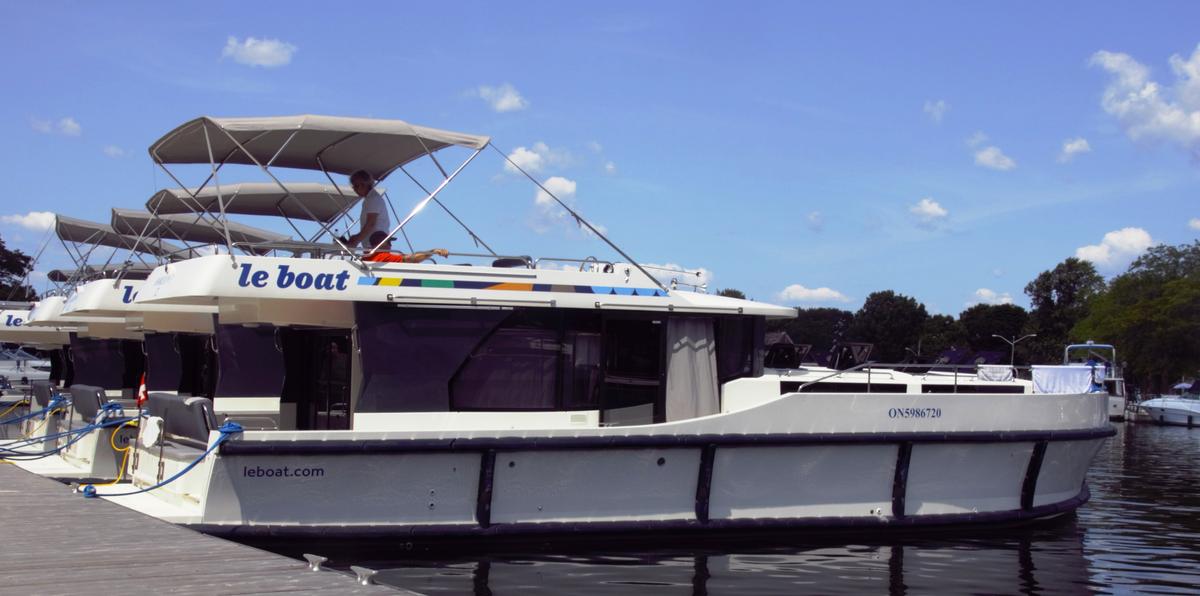
A Loose Plan Along the Rideau
We won’t be traveling the full length of the canal, and our sail plan is only loosely defined—which is one of the greatest luxuries of Le Boat. Berths don’t need to be pre-booked, and you can tie up at all manner of places along Rideau. Built by the British as a military operation back in 1832, today it’s plied mostly by pleasure craft. It’s now recognized as a UNESCO World Heritage Site and operated by Parks Canada, and a trip here feels a bit like sailing back in time, with locks still hand-cranked open and closed, and lockmasters usually handy for a chat. Boats can overnight at mooring balls, town docks, alongside locks, and in most cases, fees are prepaid, or free.We make our way at a meandering pace, with one of my fellow cruisers, a former fireman, happily steering most of the time. Proceeding through Poonamalie, we loop our lines over cables at the side of the lock and chit-chat amiably with the national parks workers who, always friendly, provide tips and advice for the next few days. The Germans, out on their decks, tell us they booked three weeks, and plan on taking their Horizon all the way to Kingston, on the St. Lawrence.
After crossing three lakes—Lower, Big, and Upper Rideau—we tie up at a dock and spend time in the charming busy little village of Westport, passing its pubs and ice cream parlors on the way to Scheuermann, a “garagiste” winery nearby. With just six acres under vine in their unique micro-climate, they grow Chardonnay, Pinot Noir and Vidal on a green, rolling hill. Touring the vines, then the winery—the heart of the operation, barrels and stainless steel equipment is indeed literally housed in a garage—we finish on a broad patio, ordering a pizza from their wood-fired grill.
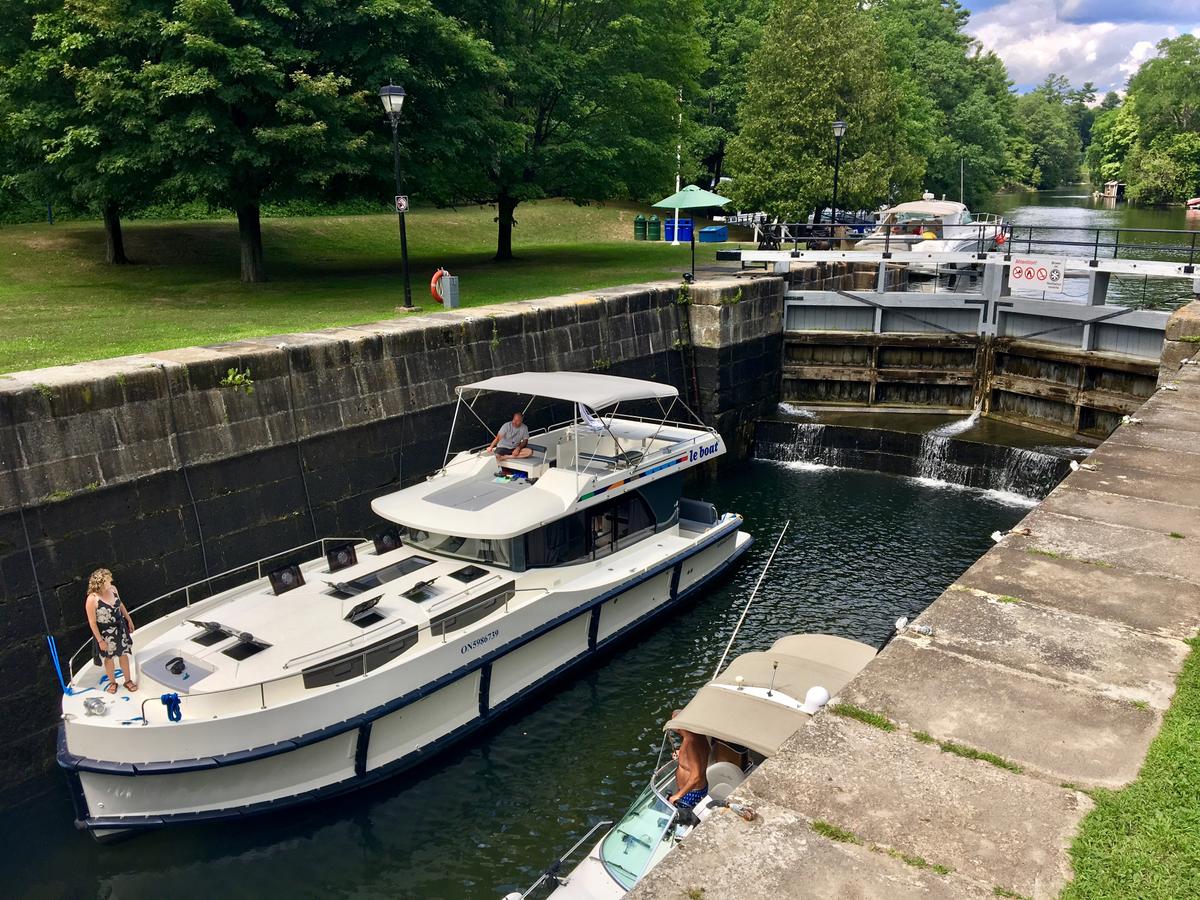
Boaters From All Over the World
Further up the canal, we make it through Chaffey’s Lock just before closing time, tying up at the stone wall for the night. I chat with the lockmaster, Jeff, who says they completed 35 cycles that day—a very busy one. He says they see boaters from all over the world—New Zealand, Australia, California, and lots of Germans.“With the latter, there’s sometimes a language barrier,” he says, “but everyone’s always excited to be on the canal.”
We have dinner on the patio at The Opinicon resort, the “Grande Dame of the Rideau,” just walking distance from the lock, and recently restored to its original charm.
“It’s the Group of Seven meets ‘Dirty Dancing,’” explains co-owner Fiona McKean, who says she came here all the time as a child. It’s lovely, a series of cottages and a lodge and a 1950s ice cream shop, all set among towering trees, near the water.
“We had to save a feeling,” she says.
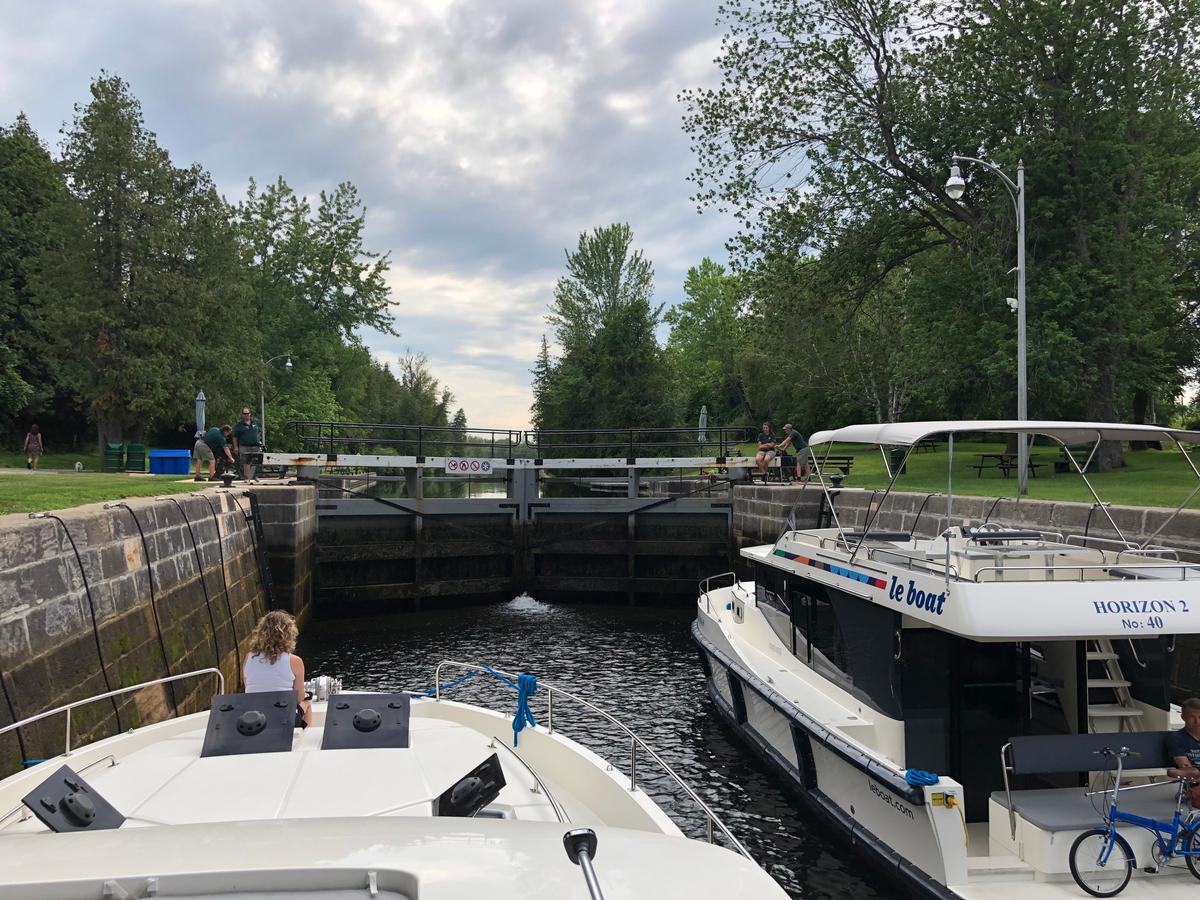
As we loop back, making our way back through Chaffey’s and toward Smiths Falls, I know what she means, about the Opinicon, yes, but also the feeling of freedom on this boat. The feeling of the rumble of the engines, and the sun beating down on the sundeck, and those precious last, couple days of the trip, just enjoying the lakes. One time, we tie onto a mooring ball and spend a whole afternoon and evening near forested Colonel By Island, just swimming off the stern and playing cards, and enjoying the scenery.
And, just once, I get behind the controls. With Poonamalie ahead, and a vast lake around me, I steer the Horizon 3 as it cuts through the cool, dark water. I may not understand all the gauges (or toe lights, or how that diesel tank works), but indeed, it feels just right.

Screen reader support enabled.
If You Go
Spacious and stylish, Le Boat offers self-guided, self-isolated voyages in several European countries (including France, Germany, and England), as well as the Rideau. Boats in the Horizon series can accommodate as many as 12 people, and all include nice touches, like a barbecue hotplate, USB ports in cabins, heat and cooling, and separate shower cubicles in the bathrooms.Operated by Parks Canada, the Rideau Canal National Historic Site, in addition to its 47 locks, includes day-use trails and picnic areas, public restrooms, and friendly lockmasters who can help guide you along the way.
Scheuermann Vineyard and Winery offers tours, tastings and some excellent wood-fired cuisine.
The author was a guest of Le Boat.
Toronto-based writer Tim Johnson is always traveling, in search of the next great story. Having visited 140 countries across all seven continents, he’s tracked lions on foot in Botswana, dug for dinosaur bones in Mongolia, and walked among a half-million penguins on South Georgia Island. He contributes to some of North America’s largest publications, including CNN Travel, Bloomberg, and The Globe and Mail.

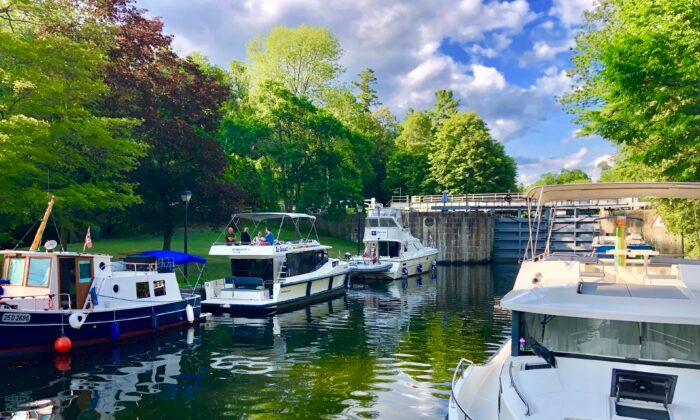

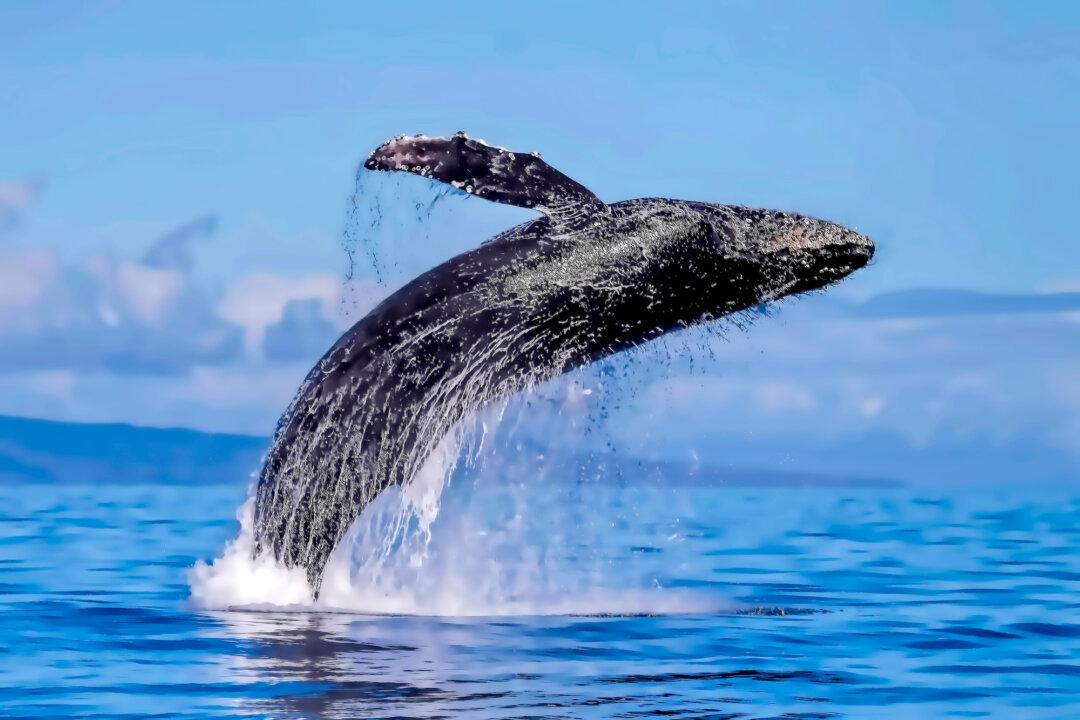


Friends Read Free